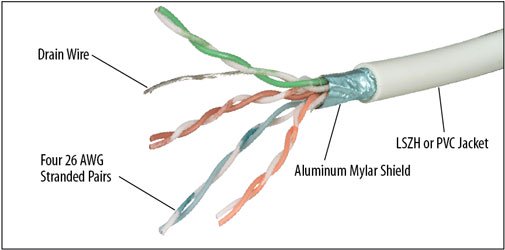
Category 6 or Cat6 Ethernet cable is designed to provide up to 1 Gbps Ethernet transmission, and is required for 1000 Base-T style networks. However, the choice to use unshielded twisted pairs (UTP) or shielded (or screened) twisted pairs (STP or ScTP) depends on the location of the installation.
Typically, the shield is only required in cases where the cable is run through an area of high electro-magnetic interference or radio frequency interference (EMI/RFI), such as output by strong power lines, motors, magnets, and radio antennas. Outside of these situations, the shield does not help provide a faster or clearer signal, and can add more problems than it solves.
Pros and cons
Without a shield, Cat 6 UTP cable is already resistant to minor and typical forms of EMI/RFI, such as having a fluorescent light or small motor nearby. In these cases, you should always run the cable at a 90° angle to the source of the interference in order to minimize exposure. Otherwise UTP is cheaper, lighter, and just as effective as STP.
If you need STP cable, you have to remember that the shield itself must drain, otherwise EMI/RFI can build up on it and degrade the signal inside. Drainage is typically done at the connection site by using a shielded Ethernet coupler or Ethernet jack that is connected to ground.
Also note that the weight of shielded cable, while not very heavy, can be significant if you are running multiple cables in an area. In some cases, heavy cabling run above a ceiling or behind a wall has caused collapses and structural damage over time.
Quick note: Visit L-com's Ethernet Product Center for a huge selection of common and hard-to-find Ethernet cabling solutions, including shielded, harsh-environment, special jacketed and more.

